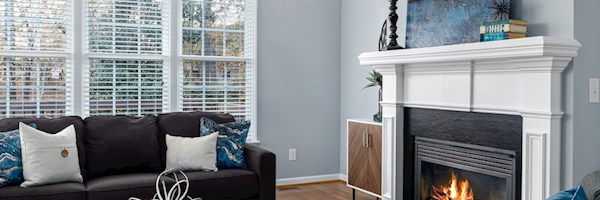Home safety for children is essential – particularly as the summer holidays approach and families spend more time around the house.
You can’t keep children in sight at all times, and so many hazardous things in your home could cause serious harm. It only takes a few seconds with your back turned for them to touch what they shouldn’t.
The best way to keep children safe is to teach them from an early age which items are definite no-nos and which are safe to handle. But, even then, you may leave out some important advice, so you need to make your home as safe as possible for peace of mind.
Windows and doors
Slamming doors or unlocked windows can mean disaster for little fingers. Fitting your doors and windows with safety latches will help keep your children safe. These allow you to lock your doors and windows while still letting in air and preventing accidents such as a door slamming on fingers or a child falling through an open window.
This is particularly important if you live in a multi-storey home where the top-floor windows may not have additional burglar bars, and balcony doors don’t have slam-lock security gates.
Glass doors can be particularly hazardous for young children, with the possibility of concussions and other serious injuries. To prevent accidents, fit doors with safety glass with stick-on decals at child’s eye level so that they can see there is an obstruction and don’t accidentally run into them. The stickers will help prevent accidents, but the safety glass will prevent nasty cuts if someone does runs into the door.
Electricity
Electric sockets seem to attract small children, and they can be deadly. So for peace of mind, it’s a good idea to invest in child safety socket covers. They are relatively inexpensive, easy to fit, and can prevent accidents.
With very small children in the home, it’s a good idea to unplug all appliances that are not in use. This will prevent children from pulling down a heavy appliance that could harm them. It will also prevent them from switching on appliances like irons and kettles, which can cause serious injuries.
Mixing water and electricity can lead to electrocution, so you should also teach children never to touch electrical appliances with wet hands. For example, toasters, lamps, hairdryers and television sets can all become lethal when handled with wet hands.
Fire
Children are fascinated by fire, so be sure not to leave lighters, matches and candles out in the open where children can get at them. Store candles out of reach and lock your firelighters, cigarette lighters and matches in a cupboard with a childproof lock.
Childproof locks are also useful when storing flammable or harmful substances.
Be sure to teach your children simple steps to follow if a fire does break out on your property.
Pills and poisons
Most parents know better than to leave medicines or pills on low tables or in handbags where children can reach them. But it’s easy to forget that visitors might not be similarly aware and may have potentially dangerous items in their handbags.
When friends or family members come to visit, ask them not to leave their bags unattended on a couch or countertop. Instead, put visitors’ bags in a room with a closed door, in a closet in the entrance hall or somewhere else that is out of reach – and out of sight.
Most homes are full of dangerous poisons that parents might not consider hazardous until an accident occurs. Everyday items like bleach, toilet cleaners, petrol for the lawnmower, liquid petroleum gas for heaters and stoves and paint chemicals are all hazardous substances that are commonly stored around the home.
It is essential to store these securely and make sure your children can’t get at them. It’s also important to know what to do if someone swallows any of these substances. Fast action can save lives, but you need to know the correct procedures. For example, the instinctive action when a child has swallowed something harmful is to make them vomit, but this may cause injuries to the oesophagus, throat, and mouth. Instead, get the child to spit out whatever poison is still in his mouth and take them to the nearest casualty or poison centre.
Secure remote controls, car keys and any devices that may contain small button-cell batteries, like musical greeting cards and children’s books. Batteries contain harmful substances that can cause serious tissue damage if ingested – in just an hour or two. If your child has swallowed a battery or one is lodged in his throat, ear, or nose, immediately take them to the nearest hospital casualty facility.
Water
Children can easily drown in just a few centimetres of water, so children under the age of six should always be supervised while taking a bath or playing in a pool.
To avoid scalding, teach your children to test the water temperature in the bath before getting in.
It is essential for children to practise basic swimming and floating techniques so that they don’t panic in the water. If your child is still learning to swim, make it a firm rule that they must wear flotation armbands or vests to help keep them afloat.
Emergency
Panic buttons are usually positioned at a height suitable for adults to reach, so be sure you have a spare portable button available for older children to use if necessary. Portable panic buttons are also handy to keep nearby when you are out of doors.
It is essential to teach your children safety procedures to follow if they should face a burglary, natural disaster or fire, in case you aren’t in a position to tell them what to do.
The most important thing is to teach them the quickest way to get out of the house. Draw a diagram of your home and highlight the best escape routes. Then, designate a place to gather outside to account for each family member.
If possible, teach your children basic life-saving techniques, like CPR and how to use the first aid kit. Make sure the kit is in an easily accessible place and that your children are familiar with the contents.
Always keep a list of emergency phone numbers where all family members can see them, for instance, on the fridge or kitchen noticeboard. Numbers could include:
- Your security company.
- The fire department.
- Ambulance services.
- SA Police Services.
- Your family doctor.
If you are unable to provide the number in an emergency, a friend or a neighbour will have access to this valuable information, which can save precious minutes – and maybe a life.
Writer : Sarah-Jane Meyer







